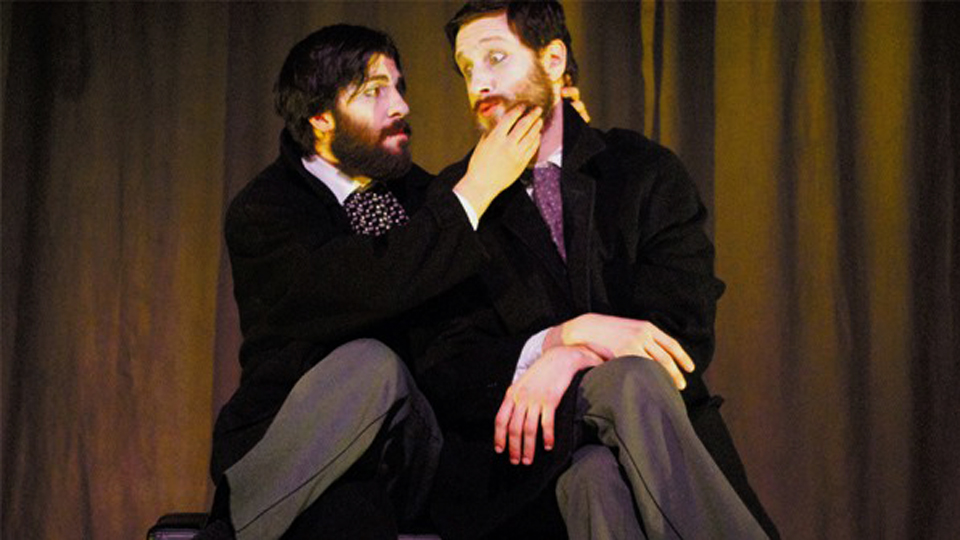As is the case with many GTA theatre companies, the audience that attends the Tarragon Theatre’s shows isn’t exactly young, and may be more interested in shows that are safe and likable than groundbreaking or gritty. When it comes to the storyline, Tarragon’s The Double, directed by Adam Paolozza, is no exception to this generalization.
The plot follows Golyadkin, an incompetent office clerk, dysfunctional lover, and bachelor without authority over his manservant, who finds himself mysteriously shadowed by his double, a man who looks exactly like him, does his job, and woos a woman in his name. The conclusion was vague at best, and left me incredibly confused about what had actually taken place.
However, the play’s form is brilliant. Set on the very intimate stage of the Tarragon Extra Space and narrated by a master storyteller and musician, The Double introduces a new type of play to the theatre world. The cast consists of three men who are vastly different and incredibly versatile. One plays the narrator and the upright bass, another Golyadkin, and the third everyone else. The one female character is played by the shapely bass and voiced by another actor.
Each of the performers is absolutely elastic. The narrator, played by Arif Mirabdolbaghi, draws the audience into the piece, telling the story as much with words as with accompaniment, plucking, strumming, and tapping on the bass. He also acts as Golyadkin’s conscience, another version of his double. The narrator plays a powerful part because of the history of the piece: it was originally a hugely unpopular novella by Dostoevsky. This character slips between the world of the play and the audience, a stranger to neither.
Golyadkin, as a character, is pathetic. I felt sorry for him because he is even more clumsy and indecisive than I am. Having said this, the actor who plays him (Paolozza) is always in control of his body on stage. I have never seen such clean, consistent mime work, which itself was a treat to watch. As a performance artist, he straddles the line between dance and drama, using unmatched energy and technical skill to tell a story.
But there’s a problem—the story’s not particularly captivating since the stakes are remarkably low. Golyadkin is by no means miserable: he lives in a comfortable apartment with an irritating but hugely comic manservant, he is employed, and even has 700 rubles in savings, so I don’t see why he needs the double’s help.
The music is amazing, and sound effects are also frequently used. Every time a door opens or a stair creaks, one of the actors is there to make the appropriate sound with amazing accuracy. This is especially important because there’s hardly anything to the set, and the whole world is created through mime and narration. One particularly poignant moment is the opening sequence, in which the narrator describes a dream Golyadkin is having. In it, he is being chased down a dark street by none other than himself. At this point, Paolozza runs on the spot in a harshly lit centre stage. This alone was very believable, especially in the context of a dream sequence and a story as told from the outside. Then Viktor Lukawski, who plays some 15 different characters throughout the show, sneaks under Golyadkin’s open coat to make it fly out behind him. The level of teamwork that The Double requires to sustain the type of theatre the actors have committed to is remarkable.
The Double is a highly appealling show in terms of comedy and creative staging, but leaves something to be desired in terms of plot. It came close to breaking the Tarragon’s conventions, but didn’t quite manage it, remaining safe, funny, and palatable.



